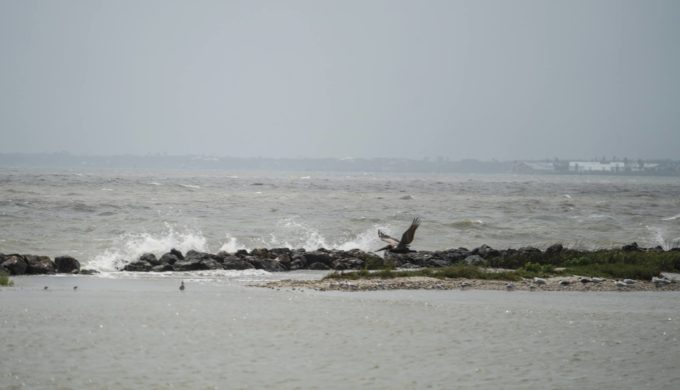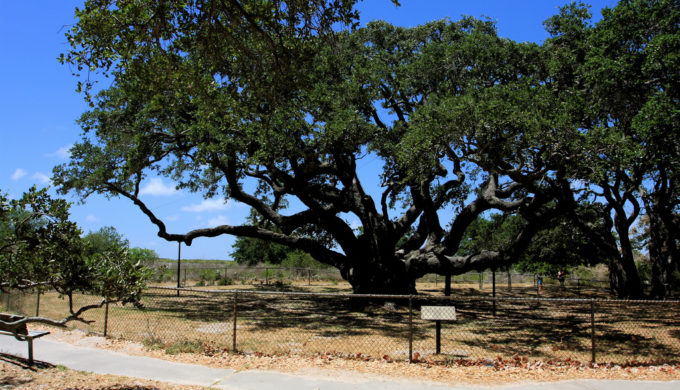Each year, approximately 2,000 feet of Texas shoreline at Goose Island park erodes. An oyster reef acts as a buffer, cutting down on the potential wave action which would result in that erosion. This year, a number of volunteers (including Moody High School and Texas A&M University students from Corpus Christ) began work before their elected start time of 8:30 a.m., shoveling roughly 40 thousand pounds of oyster shells in metal buckets while the temperatures dropped.
Additional volunteers fed the shells through a bagging tube, placing them into hard mesh sacks to be knotted and stacked for the construction of a new oyster reef which would assist in slowing future erosion. Last year, Hurricane Harvey (category four) caused considerable damage and erosion to the park, and this bi-annual volunteer event (which was founded in 2009) helps to rebuild and restore.
Collecting the shells from local wholesalers and restaurants twice weekly and taking them to the Port of Corpus Christi, the process of quarantining them for future reuse is commenced. Until such a project, no reuse plan was in place for the shells to be returned to the water. Oysters, whose spawning season runs from April through May, have a preference of establishing themselves on top of their deceased comrades. They also require the algae that form at the top of the water, limiting them on how deep they can go to survive.
Photo: Facebook/Billie Tigyore Lusk
According to Gail Sutton, the chief operating officer for the Harte Research Institute for the Gulf of Mexico, 85 percent of the world’s oyster reefs have vanished. “This is one of the few animals where you’re not only taking them (to eat) but their home as well,” she explained to nbcdfw.com. This year’s volunteer selection has built upon the success of last year’s group. Prior to Hurricane Harvey, to protect Goose Island Park from erosion, the Institute had finished a 6-acre reef made entirely from oyster shells they collected from area restaurants. “We were disappointed at first because we had saved all that shell, a million pounds, and finished this reef that had taken years and thought it had all been wiped out in a month,” Sutton noted. But the reef was designed with cuts, allowing it to remain in place if water came at it fast and hard. It worked, and the reef survived the storm.
Photo: Flickr/TravelingOtter
Goose Island Park is home to live oaks, one of which is considered to be among the largest in the country, standing 44 feet tall, with a circumference of 35 feet and crown-spread of 90. “What’s happening is not only is the land eroding, but also the salt water is coming underneath and getting to the roots and that will kill those trees,” Sutton explained. This year’s reef construction is close in size to the 6-acre reef which survived the practically-direct hit from Hurricane Harvey. A Goose Island park ranger explained that Harvey was a terrifying experience, and it took a while for park staff to return due to the fact some of them completely lost their homes. He explained, “We literally had to move mountains to reopen. We had tons of sand and shell to move off of some of our roadways before we could reopen (to overnight visitors) on March 1.” Today, the fishing pier and Trout Street camping areas remain closed due to storm damage, but with the continued efforts of these volunteers and those in the future, erosion will be kept to a minimum, which is a considerably big deal with the upcoming 2018 tropical storm season predicted to be above-normal.





